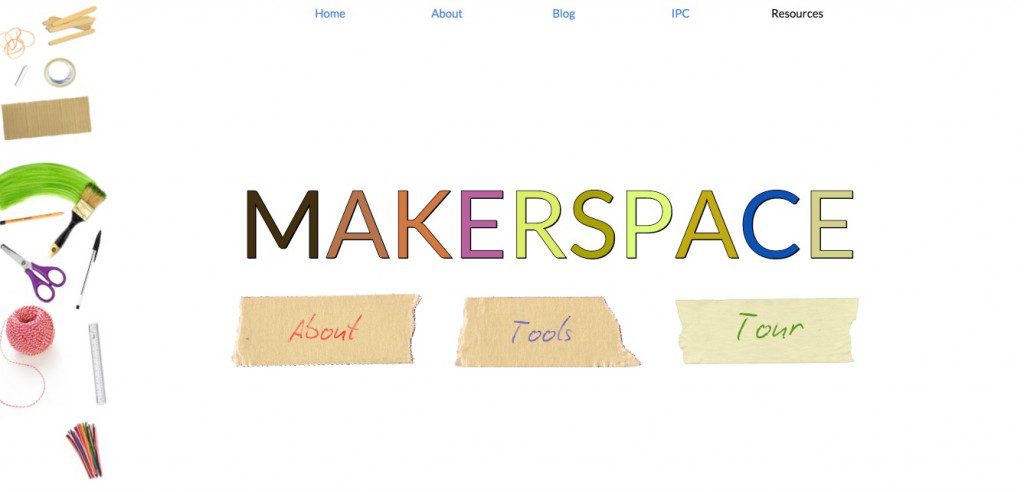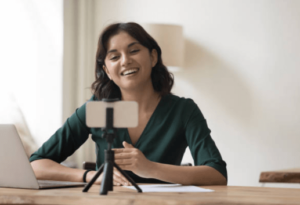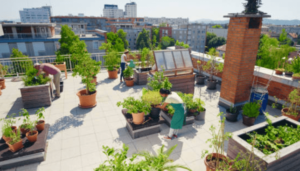One of the key jobs of our digital leaders last term was to help design and create a makerspace room, which I’m pleased to say is finally available for students and staff to use this term. We have now got all the resources we need and the walls have been painted with unique designs to celebrate what this room stands for!
So, what is a makerspace? A makerspace room is a multipurpose learning environment that both encourages and enables children to make things. In the process of making things, they learn. It is very relevant to many of the activities that we currently do in school such as STEAM, the IPC and enquiry-based learning. You can find out some more information about how to plan and design a makerspace here.
As a well-resourced school, we can use the makerspace to both store and use these resources. Having now put the makerspace on our school booking system, this means that when teachers book the room, they also book all the resources available in that room.
Using our Samsung 360 Gear camera, I took a photo of the room earlier today. You can now take a 360° panoramic tour, to see what our makerspace looks like below:
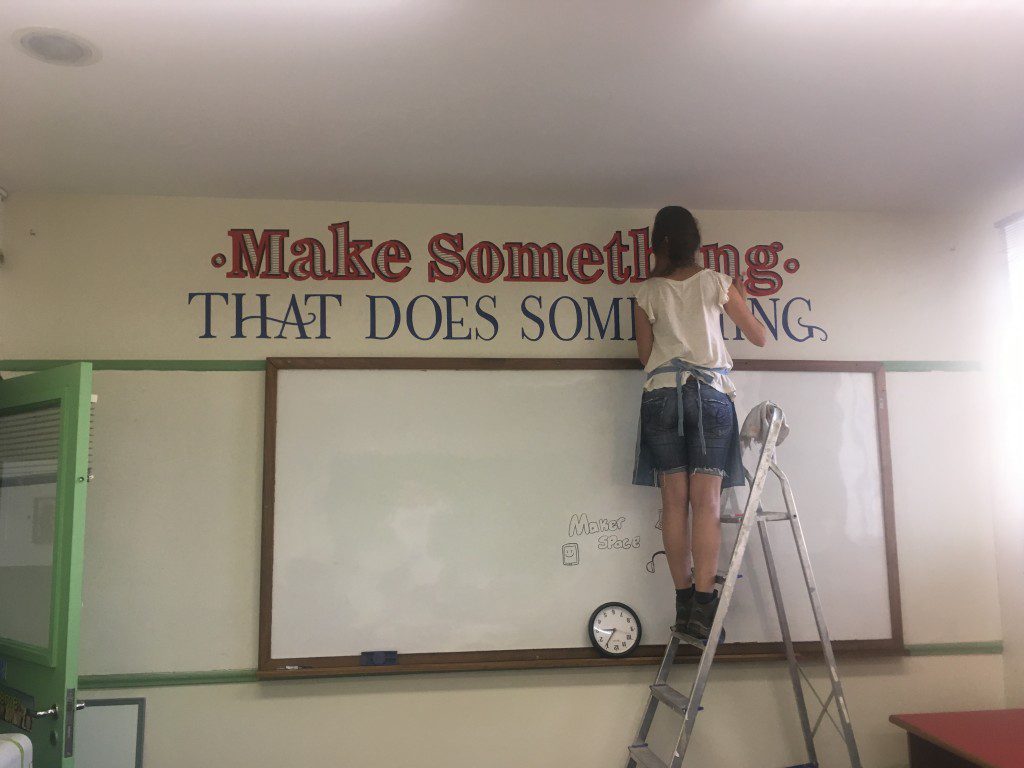
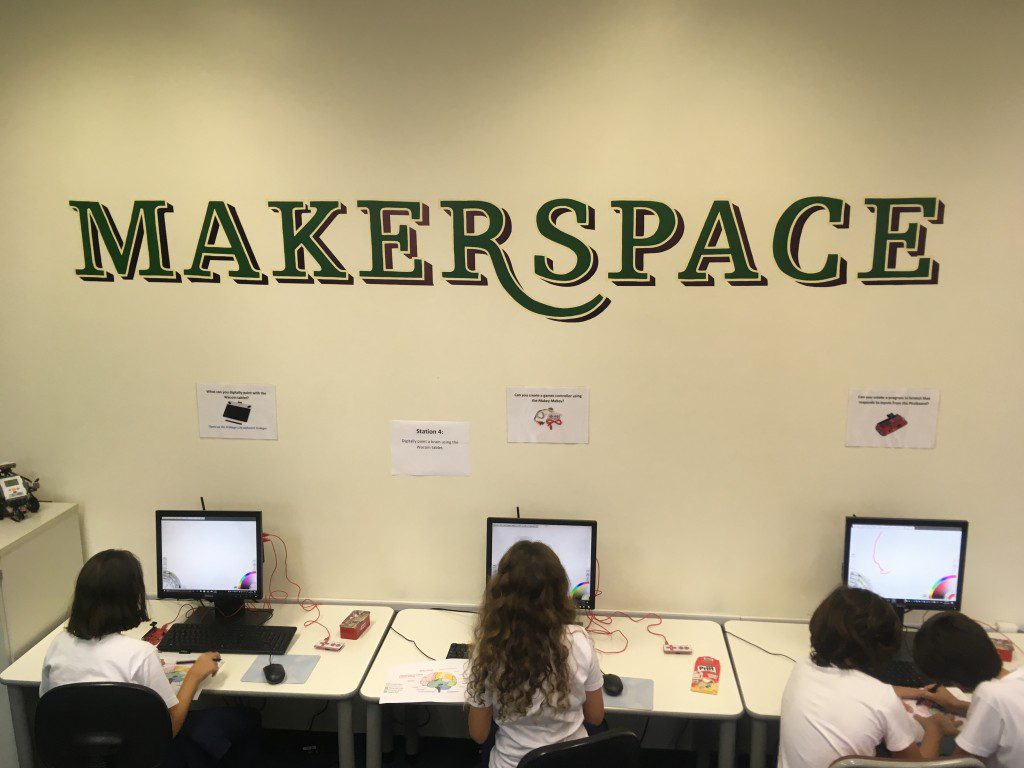
To help students and teachers get the most out of our makerspace, our digital leaders have also helped to design a makerspace web page, which is accessible from our Classroom Flipped website.
One of the key features from our makerspace web page is the Tools option. From here, students and teachers can see all of the resources that they have access to inside the makerspace room. For many of these resources, I have attached self-directed activity sheets, which can be downloaded. The ‘Coding’ option, for example, provides information and prompts to help learners design and program their own computer game. All of these self-directed activities are designed to be adaptable to whatever theme or topic the students are learning about.
You can find the complete collection of these self-directed activities below:
[accordion]
[item title=”Self-Directed Makerspace Activities”]
[embeddoc url=”https://technologyforlearners.com/wp-content/uploads/2018/07/Activity_Coding-.docx”]
[embeddoc url=”https://technologyforlearners.com/wp-content/uploads/2018/07/Activity_Digital_Art1.docx”]
[embeddoc url=”https://technologyforlearners.com/wp-content/uploads/2018/07/Activity_Makey_Makey.docx”]
[embeddoc url=”https://technologyforlearners.com/wp-content/uploads/2018/07/Activity_Minecraft1.docx”]
[embeddoc url=”https://technologyforlearners.com/wp-content/uploads/2018/07/Activity_Movie_Making.docx”]
[embeddoc url=”https://technologyforlearners.com/wp-content/uploads/2018/07/Activity_Photo_Editing1.docx”]
[embeddoc url=”https://technologyforlearners.com/wp-content/uploads/2018/07/Activity_Picoboard.docx”]
[embeddoc url=”https://technologyforlearners.com/wp-content/uploads/2018/07/Activity_Raspberry_Pi.docx”]
[/item]
[/accordion]
Having discussed with the digital leaders what we could use the room for, we decided to make an acronym out of the word! We then came up with the following statements to describe what can be achieved in our Makerspace:
M stands for Movie-Making. Making videos provides rich opportunities to create something original. Easy to use, iPads and smartphones, for example, allow learners to produce tutorial videos, presentations, stop-motion animations and short movies. Green screens, along with apps for special effects, make the whole process of movie-making much more collaborative and engaging.
A stands for Awesome Activities. Makerspaces are hubs for awesome activities, which allow tinkering, play and open-ended exploration. The only thing that is required is sufficient space and appropriate materials, to encourage learners to make.
K stands for Kinetic. Whether it is a making an animation, designing a computer game, programming a robot, building a balloon rocket, controlling a mini-drone, and much more besides, makerspace activities have one thing in common – they get things moving!
E stands for Enquiry-Based Learning. As making itself is part of the learning journey, the makerspace naturally facilitates enquiry-based learning, placing students’ questions, ideas and observations at the centre of their learning experience. Educators simply ask essential questions in order to frame this learning journey. Learners are then more likely to make enquiry-driven discoveries during their making process.
R stands for Relevant. As making itself is part of the learning journey, the makerspace naturally facilitates enquiry-based learning, placing students’ questions, ideas and observations at the centre of their learning experience. Educators simply ask essential questions in order to frame this learning journey. Learners are then more likely to make enquiry-driven discoveries during their making process.
S stands for STEAM. The makerspace learning environment lends itself well to STEAM. As an acronym, STEAM stands for Science, Technology, Engineering, Art and Maths. As an educational approach, STEAM is about facilitating learning experiences across these five subject areas, which promote collaboration, enquiry-based learning and fun! You can find some links to excellent STEAM activities, by the way, from our STEAM web page.

